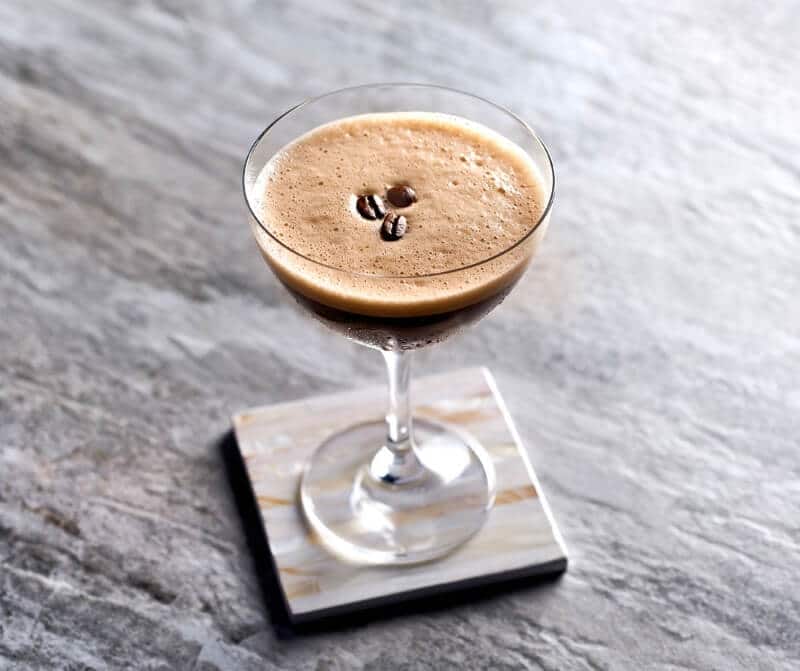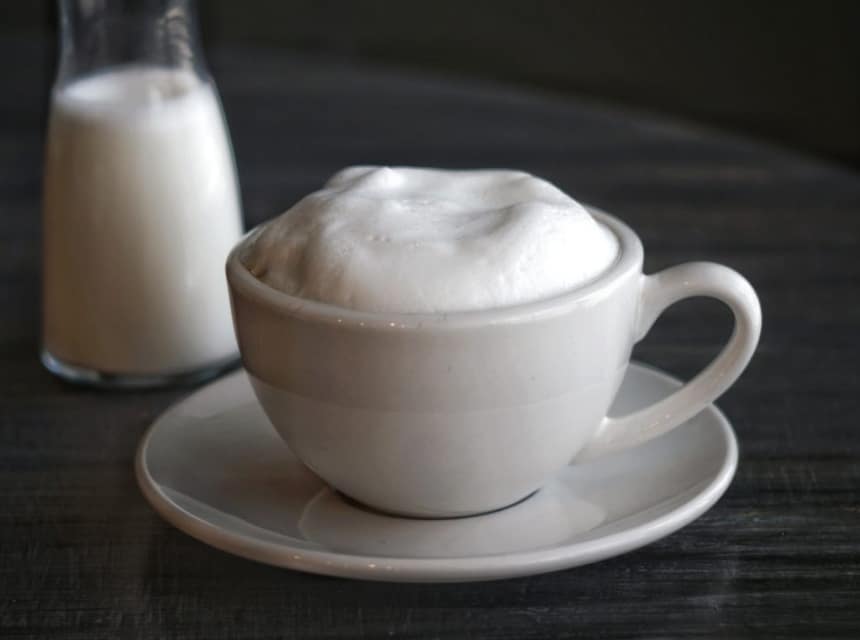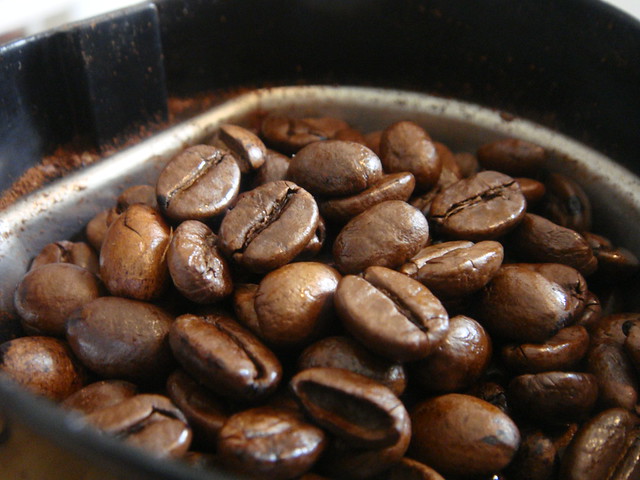

The matcha latte might interest you if you have been looking for an alternative to coffee. Matcha latte is a delicious drink that is full of antioxidants. To prepare it, you only need a few essential ingredients and 10 minutes for preparation.
The primary ingredients are matcha tea powder, water, and your favorite non-dairy milk, such as coconut milk, oat milk, or soy milk. What’s more, you can customize it with your favorite sweetener. This article will give you general information about matcha powder, the types, other ingredients used, and step-by-step recipe instructions on how to make a matcha latte. Read on to find out more.
Matcha means powdered tea. It is a fine, green powder made from tea leaves that are covered before harvest (for more intense color and flavor), left to dry, and go through a long selection, cleaning, and grinding process.
Its origin is Chinese Trusted Source The History of Matcha – Matchaful The History of Matcha www.matchaful.com , from the Tang Dynasty, but the Japanese popularize it. Matcha is the main ingredient of the Japanese tea ceremony Trusted Source How to Host a Japanese Tea Ceremony - The Republic of Tea The Japanese Tea Ceremony, also called Chanoyu, Sado or Ocha, is a cultural ceremony steeped in history that dates to the 14th Century. the.republicoftea.com , dating back to the 14th century. It is used to promote relaxation before meditation but without inducing sleep.
It’s a more powerful energy drink than coffee (note, it’s not suitable for insomniacs).
Tea leaves have chemical compounds, and their properties can act on our body and mind. Like all green teas, Matcha is also a potent antioxidant with essential benefits for our health.
Similarly, the benefits of matcha tea are much more effective than those of other types of tea. This is because its leaves are crushed and sold in powder form. To drink it, you need to mix it with water. In this way, you ingest all of its components. Matcha tea:
There are many grades of Matcha, and what it costs can vary quite a bit. However, as a general rule, it is considered that the more vibrant the green of the matcha powder is, the better quality it has Trusted Source The Grade Detective - What does the color of matcha indicate about qua – Matchaful Confused whether you should buy matcha that’s ceremonial vs. culinary, yellow or green, cheap or expensive? Here’s some information to help you determine whether the matcha you’re buying is high-quality or low-quality based on some simple key identifiers, and the implications it has on nutritional content. It’s impor www.matchaful.com .
The grades of Matcha tea will indicate the quality and, therefore, the use for which it is intended.
Of course, each brand of Matcha will decline the grades according to its desire since there is no official classification.
The Culinary Grade is
also known as the Cooking Grade
Trusted Source
Matcha 101: How to Find the Right Matcha
– aprikamatcha
Did you know all matcha green tea powders aren’t created equal? We’ve created an easy matcha 101 guide with everything you need to know for your next cup.
aprikamatcha.com
and is usually made from lower leaves. Its color is almond green. And the taste is usually quite bitter. It is used to flavor and color culinary preparations but does not offer all matcha tea’s detoxification and health benefits.
This grade of Matcha is used in preparing cold drinks like smoothies, milkshakes, cocktails, etc., and hot drinks like matcha lattes. The taste is full-bodied and a bit bitter. In short, you only drink it mixed with another substance, such as vegetable milk.
You may also sometimes find it under the name “Classic Grade.” It’s a type of Matcha consumed and made traditionally. A little cheaper than ceremonial Matcha, but it still has excellent quality. Also, the taste is good enough to drink without milk or sugar.
The ceremony grade is a traditional matcha used in the tea ceremony in Japan. It’s created from the finest quality, first-harvest tea leaves. Additionally, it is traditionally ground with a stone grinder and is bright green, has a present taste with little to no bitterness, and the nutritional matcha qualities.
You need creamy milk if you want a frothy matcha latte. Generally, you can go for cow’s milk, soy, almond, oats, or coconut. The least creamy is undoubtedly the rice and spelled milk. You can prepare a matcha latte with any milk of animal origin or vegan.
Matcha tea is prepared in two ways: modern and traditional styles.
First, the traditional method of matcha preparation is done in the tea ceremony in Japan.
The powder is placed in a big bowl known as chawan. In this, they pour hot water. Then emulsify it with a bamboo item called chasen, a form of a whisk. This is done until the mixture looks homogenous. As a result, a layer of foam will form on the surface.
But the more modern way of making Matcha is to mix it vigorously with water. Also, you can have the ingredients in a blender if you’re making a smoothie or beat vigorously with water in a pot.
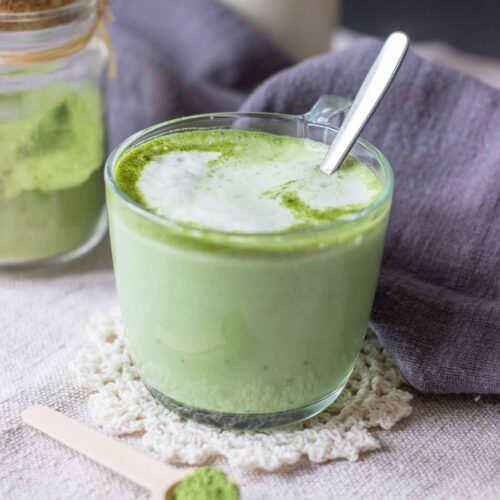
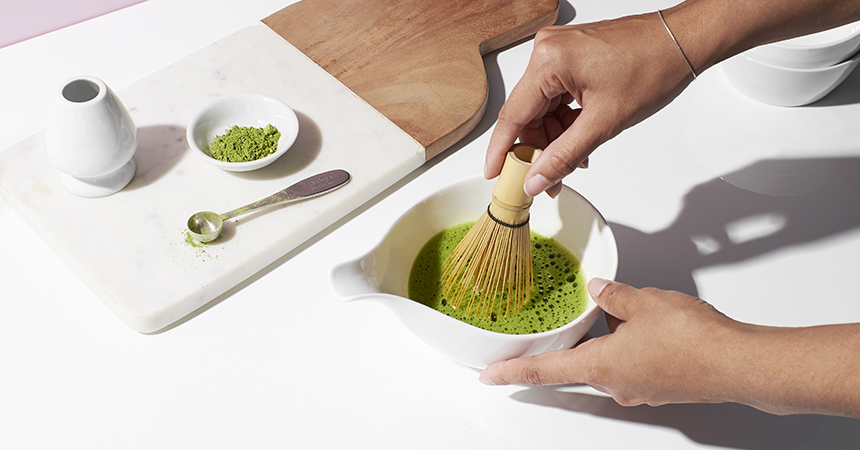
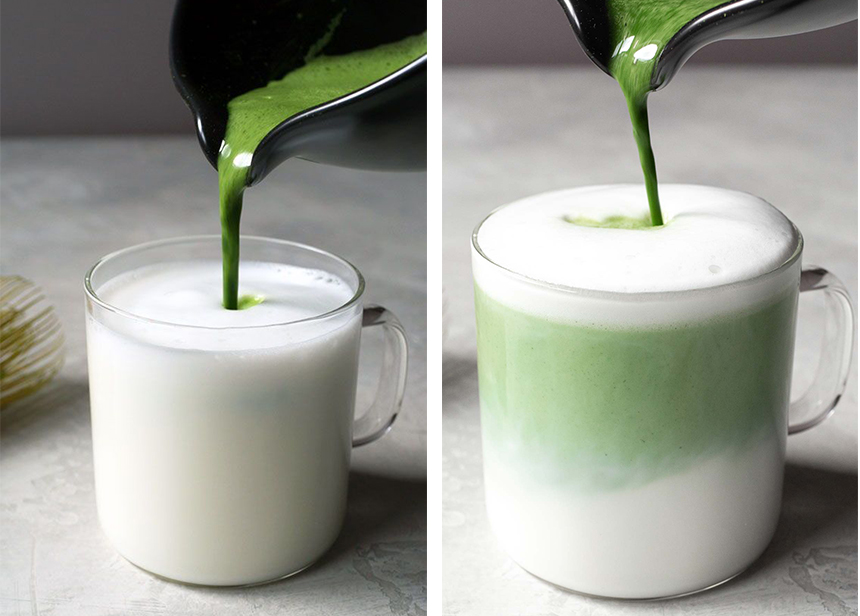
You can add any sweetener instead of maple syrup. You can pour cold non-dairy milk and add some ice cubes to make it a refreshing drink if it’s hot. It is essential to dissolve the tea and sweetener with hot water to be well integrated.
The amount of honey can be greater or less according to personal taste (you can even dispense it with sweetening). It also tastes good with erythritol, xylitol, or sugar.
Of course, you can shake ALL the milk with the Matcha, but the more liquid the container has, the more tiring; that’s why we prefer to mix only part of the milk with the Matcha and honey.
Matcha is considered a beneficial health food and tastes great with milk. However, a distinction is usually made between Matcha for ceremonial and culinary use. The first type is the finest quality traditional matcha and is better for matcha latte than the one sold for making desserts.
We’ve shown you how to make matcha latte at home. To prepare it, simply heat the water and non-dairy milk. Put the hot water, matcha tea, syrup, and cinnamon, if you want, in a bowl and stir. Pour the milk into a cup, add the matcha tea mix and stir until it foams. A frother may be helpful here. Serve immediately.
As you can see, making a matcha latte is easy, so we hope this recipe will encourage you to make it at home!

